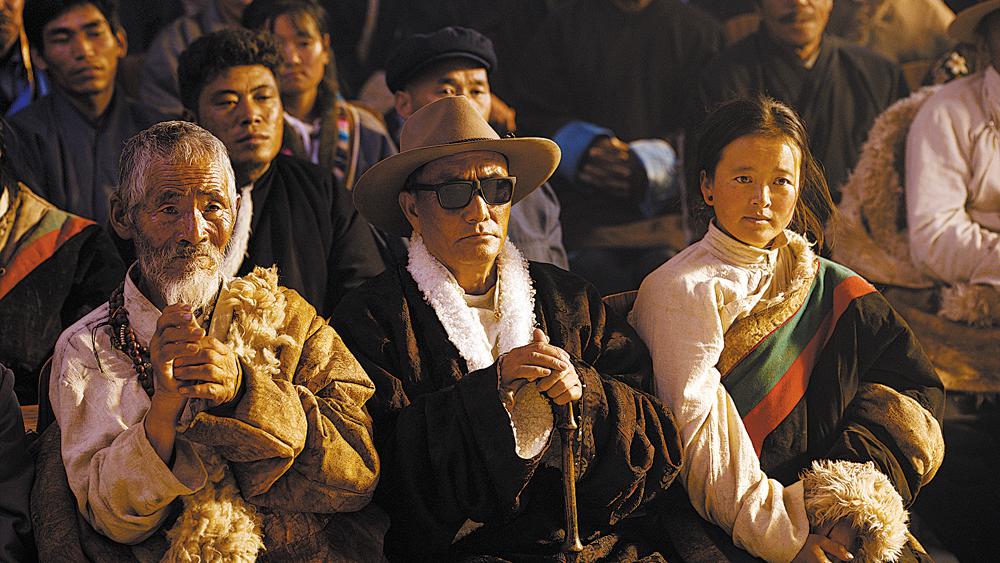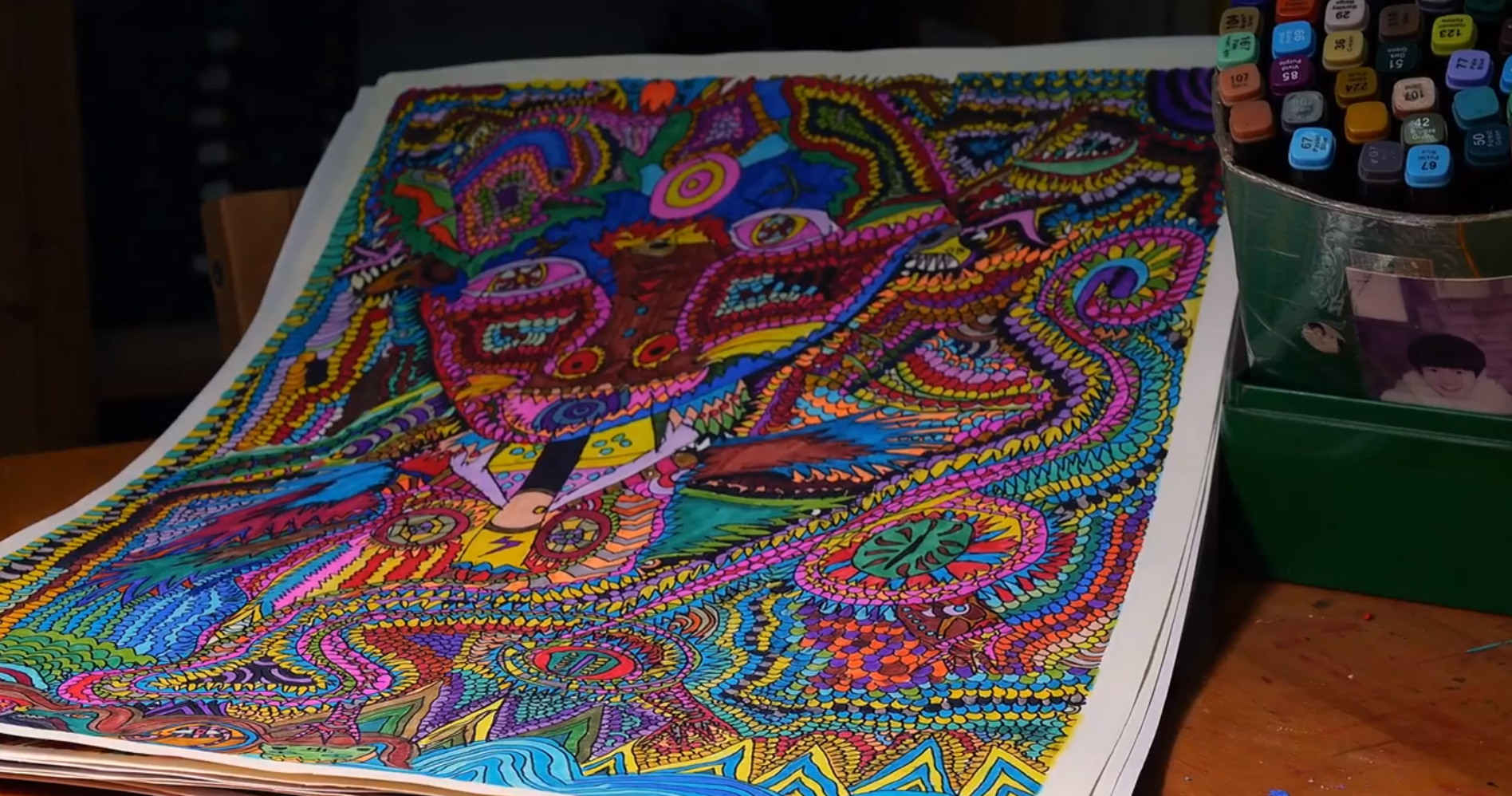
Scenes from Life of Buda, a film about the transformation of Tibet from the 1930s to 2005.[Photo provided to China Daily] A new Chinese film on the abolition of feudal system in the Tibet autonomous region, which had enabled an upper class to oppress serfs and slaves, is set for domestic theatrical release on Sept 3. With all major characters played by Tibetan actors, Life of Buda-voiced in Tibetan, with Chinese and English subtitles-is based on the real story of the titular figure, a former serf whose father died before he was born in Drachen county in Nagchu city in 1932. Buda, a poor herdsman, embraced an improved life after the peaceful liberation of Tibet in 1951 and later worked at a local forestry farm. The film shows that during the armed rebellion in 1959, the farm was surrounded by a reactionary troop of more than 300 members. Buda was asked to disguise himself, along with several others, to send confidential reports to the People's Liberation Army. He was captured, but managed to swallow the letter he was entrusted with. Despite being brutally tortured and his eyes gouged out, Buda refused to surrender the information. He was rescued by PLA troops after the rebellion was quelled. In 1960, Buda was received at a function by Premier Zhou Enlai and awarded the title of "plateau hero", making him a name exemplifying Tibetan people's love of the country and opposition to separation. In the film, Buda is played by actors Ngawang Rinchen and Dopgyal, respectively in two periods when the character is young and old. 
Scenes from Life of Buda, a film about the transformation of Tibet from the 1930s to 2005.[Photo provided to China Daily] For director Lu Jian, who has worked in the Chinese film industry since the early 1990s, the film has fulfilled his decadeslong dream to shoot a movie about Tibet. Recalling that he received a call from the script planning and creation center of the Communist Party of China Central Committee's Publicity Department in early 2019, Lu says he was excited to get the chance to direct the film. "For many literature and art enthusiasts, Tibet is a dream region that often arouses inspiration," he says. After graduating from the literature department of Beijing Film Academy, Lu became an established director thanks to his acclaimed films, such as Er Zu (2014) and The Commitment (2018), respectively recounting a farmer striving to reflect on the transformations in rural China, and centering on a mine worker's family in Guizhou province. Lu says he believes his directorial style, examining the tremendous changes of an era through a common person's perspective, has helped him to set the tone for Life of Buda. He says the audiences will see in the film feudal serfdom ending in Tibet and the region entering a new era of socialism. 
Director Lu Jian says the film has fulfilled his decadeslong dream.[Photo provided to China Daily] To prepare for the film, Lu read Tibet Transformed, a book by Polish-born journalist Israel Epstein who was a non-Chinese member of the CPC, before visiting some historical sites, such as Phalha Manor in Gyalze county, one of Tibet's largest and best-preserved noble families' residences.
Lu and his team also interviewed many people, including Buda's wife and five children. Lu wrote the film's script-spanning from the early 1930s to 2005-with scenarios unfolding in two parallel lines to shift between the past and present. "I heard a moving story that over decades Buda's wife had waited for him at the entrance of their village when Buda went to work," says Lu, adding that it inspired him to create more details about the couple's romance in the film. With an impressive contrast from his last trip to Tibet in the 1990s, Lu says he was amazed to see the changes in the region. "Most of the roads outside Lhasa's airport were dirt roads. But now there are highways. It was difficult to find restaurants or stores in the 1990s, but now you can see a variety of foreign brands in the Barkhor Bazaar area." In an effort to reflect such changes, the film unfolds with a scene featuring the completion ceremony of a section of Qinghai-Tibet Railway, the world's highest railroad. 
Scenes from Life of Buda, a film about the transformation of Tibet from the 1930s to 2005.[Photo provided to China Daily] The filming location was also the "highest ever" for Lu and the crew. Starting from June 2020, the film concluded the last scene in October, with the cast and crew visiting multiple locations in Tibet, from Nagchu to Shigatse and Lhokha. With the highest point of their filming at 5,000 meters above sea level, Lu says some crew members had to use oxygen cylinders. "But luckily, our main actors and actresses are all local veterans. You will see that their acting and actions are all very natural, which might be quite hard for those who have not grown up on the plateau," Lu says, adding that Tibetan actors in the film refused to use doubles and did the stunts themselves. Dozens of film industry insiders and reviewers attended a recent prerelease screening of the film at China Tibetology Research Center in Beijing. The film garnered praise for showing the spectacular landscape in northern Tibet, which has been barely featured on the silver screen before, and the riveting characters. Rao Shuguang, president of the China Film Critics Association, says the film is "among excellent Tibet-themed films in recent years, with its skillfully choreographed plotline and the resonating theme". Source: China Daily |









7740f3b5-9ecb-438e-9052-76cb2d4bb671.jpg)

